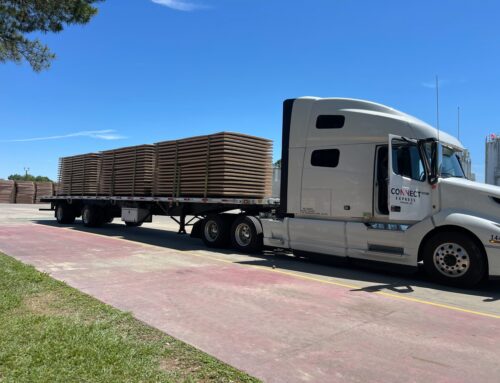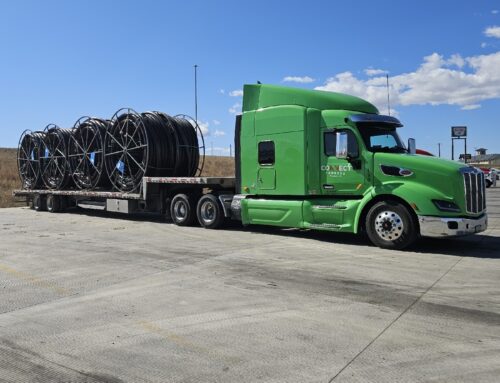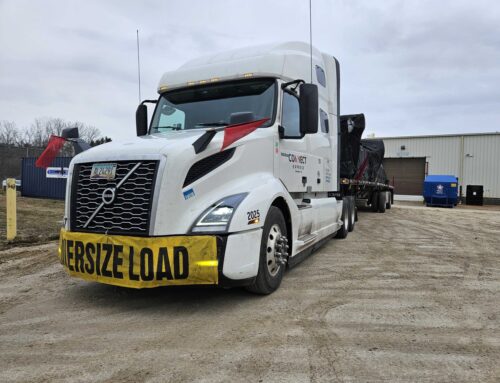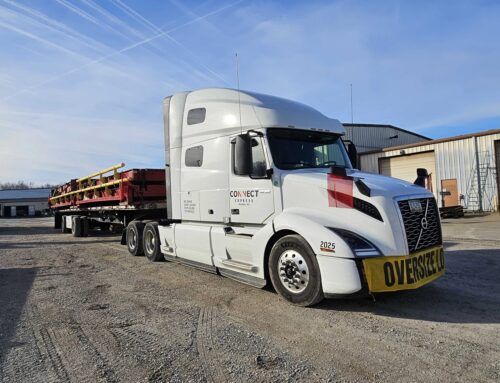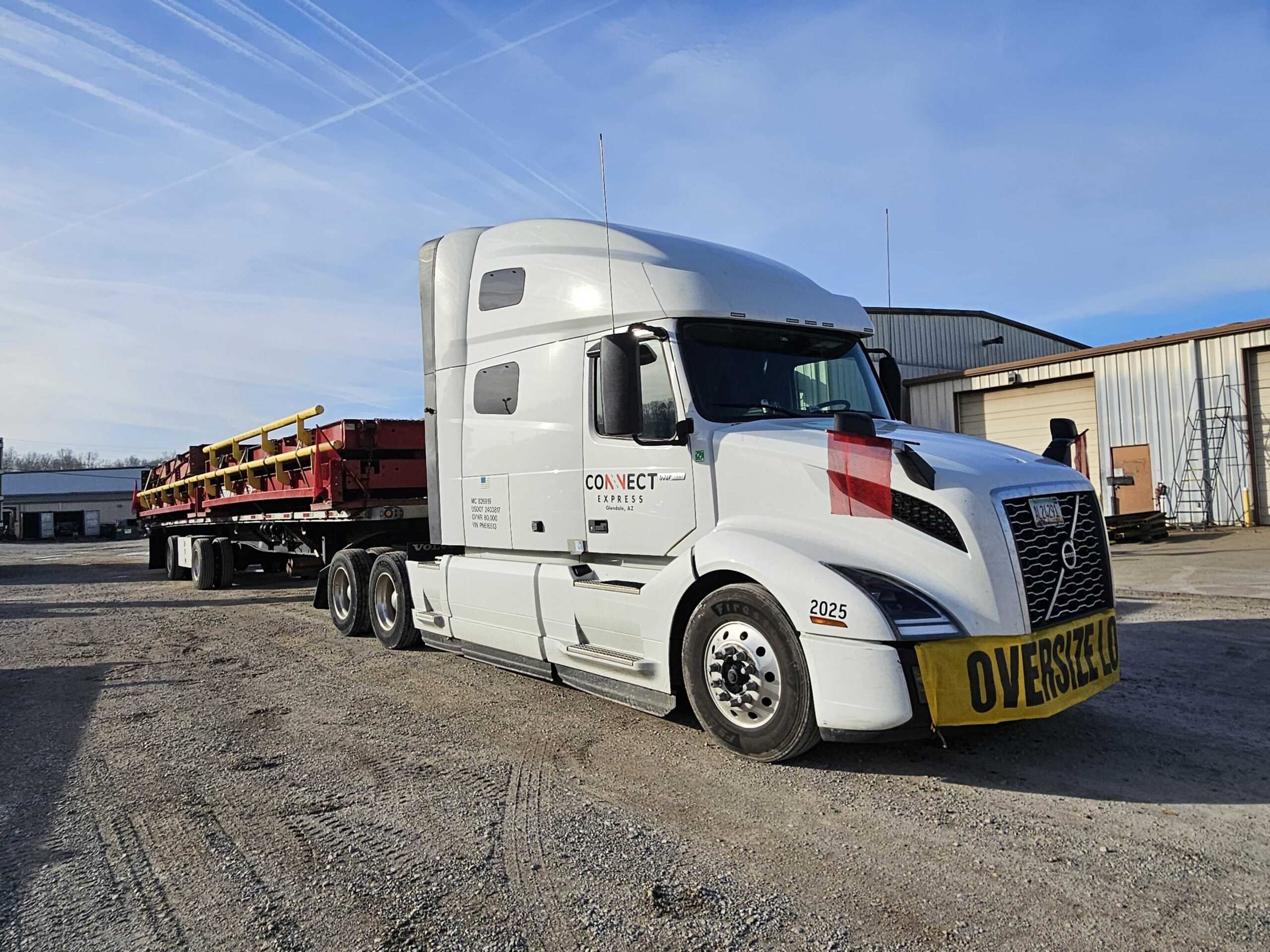
Regular Maintenance Checks
Are the backbone of keeping a flatbed truck in prime condition. These checks are not just about adhering to safety standards; they’re about preempting problems before they escalate into costly repairs or, worse, lead to accidents on the road. A diligent approach to maintenance involves a systematic routine that covers daily, weekly, and monthly checks.
Daily checks
should include a visual inspection of the truck’s overall condition, focusing on tire pressure and wear, brake functionality, and the condition of the load-securing equipment. It’s also essential to check fluid levels, including oil, coolant, and hydraulic fluids, to ensure they’re within the recommended levels and that there are no leaks.
Weekly checks
can be more in-depth, examining the condition of the battery, ensuring all lights are functional, and inspecting the brake pads and rotors for wear. It’s also a good time to look at the truck’s suspension components and ensure that the exhaust system is intact and functioning correctly.
Monthly checks
should include a thorough inspection of the engine and transmission, checking for any unusual noises or vibrations that could indicate a problem. This is also the time to replace any fluids or filters as recommended by the manufacturer’s maintenance schedule.
The importance of a maintenance checklist
cannot be overstated. A comprehensive checklist serves as a roadmap for conducting these inspections systematically, ensuring that no critical component is overlooked. It can be customized to the specific needs of the truck and the type of cargo it carries, making it an invaluable tool for any flatbed trucker.
Incorporating these regular maintenance checks into your routine ensures your flatbed truck remains reliable, efficient, and safe for every haul. Not only does this practice extend the life of your vehicle, but it also provides peace of mind, knowing that you’ve taken every step to prevent unexpected breakdowns and accidents on the road.
Tire Maintenance for Safety and Efficiency
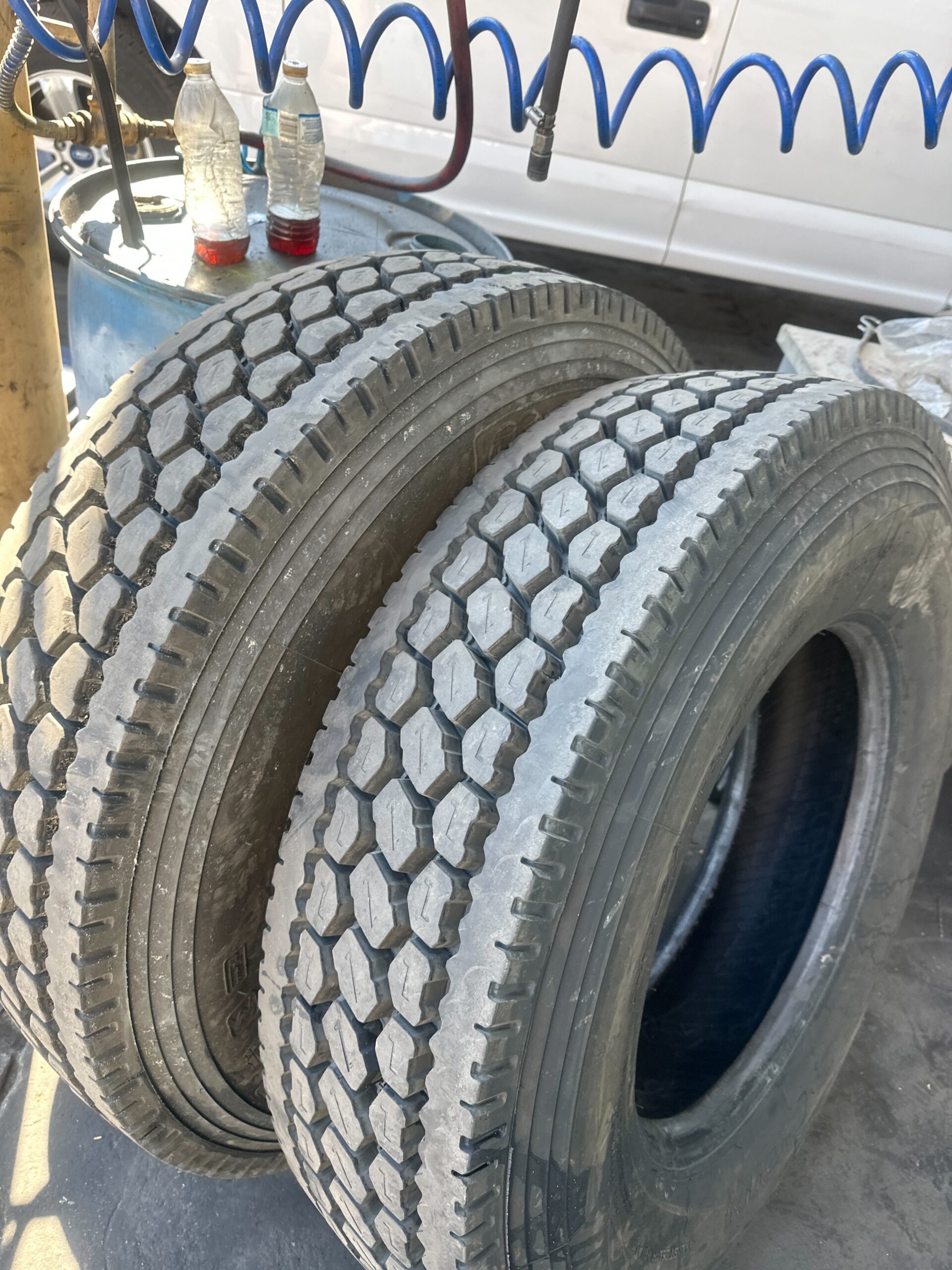
Tire maintenance is a fundamental aspect of flatbed trucking that significantly impacts both vehicle safety and efficiency. Proper care and regular inspections can extend tire life, improve fuel efficiency, and ensure safe driving conditions. Here are essential tips for maintaining your tires:
Routine Tire Inspections:
Regular inspections are crucial for identifying issues like uneven wear, damage, or embedded objects that could lead to tire failure. Check for signs of sidewall damage, tread wear, and ensure that no tires are balding. This practice should be part of your daily pre-trip inspection routine.
Maintaining Proper Tire Pressure:
Tire pressure is vital for maximizing tire life and fuel efficiency. Underinflated tires increase rolling resistance, leading to higher fuel consumption and premature wear. Overinflated tires, conversely, can reduce traction and make tires more susceptible to damage from road debris. Use a reliable tire gauge to check pressure levels regularly, adjusting according to the manufacturer’s specifications and considering load weight and temperature changes.
Timely Tire Replacements:
Tires should be replaced when they reach the wear indicator bar or if there are signs of significant damage. Driving on worn-out tires can drastically reduce handling and braking performance, especially under wet conditions, posing a safety risk.
Understanding Tire Wear Patterns:
Observing the patterns of tire wear can offer insights into other maintenance needs. For example, uneven wear might indicate alignment issues, while excessive wear in the center tread suggests overinflation. Addressing these underlying issues can further extend tire life and enhance vehicle performance.
Impact on Fuel Efficiency and Safety:
Proper tire maintenance is directly linked to improved fuel efficiency and vehicular safety. Well-maintained tires provide better traction, reduce stopping distances, and ensure stable load handling. Furthermore, optimizing tire pressure can lead to significant fuel savings over time, making tire maintenance an economically wise practice.
Incorporating these tire maintenance practices not only contributes to the safety and efficiency of your flatbed truck but also represents a commitment to responsible trucking. Regular attention to tire condition is a small investment that pays off by reducing operational costs and enhancing road safety for everyone.
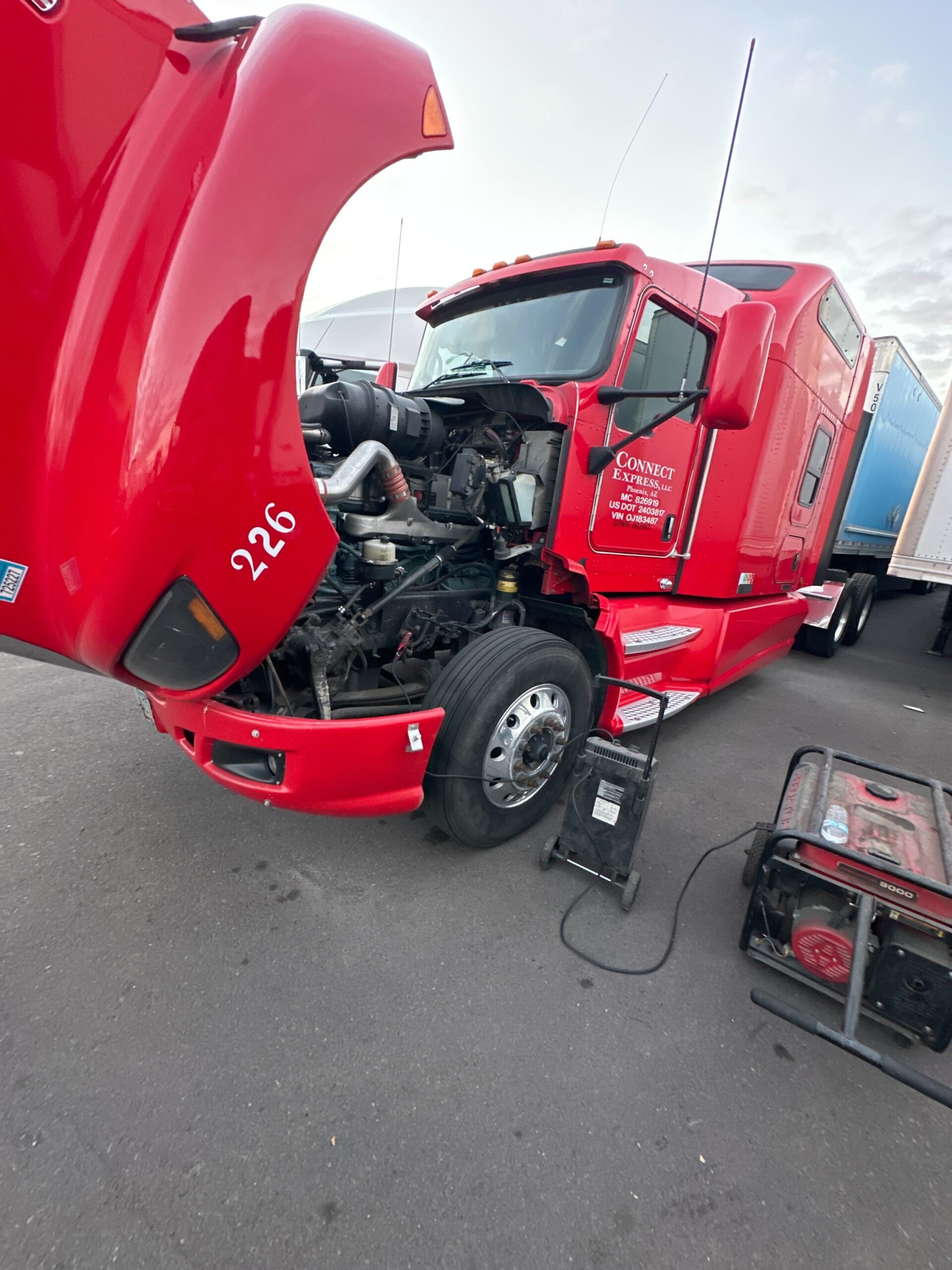
Engine and Transmission Care
Regular Oil Changes:
Engine oil serves as the lifeblood of your truck, lubricating moving parts, reducing friction, and helping to dissipate heat. Over time, oil degrades and accumulates contaminants, diminishing its protective qualities. Adhering to the manufacturer’s recommended intervals for oil changes ensures your engine remains in peak condition. Typically, this means replacing the oil and oil filter every 5,000 to 7,500 miles, though this can vary based on your specific engine type and usage.
Transmission Fluid Maintenance:
The transmission fluid plays a similar role for your transmission, facilitating smooth gear shifts and keeping the system cool. Check the fluid level and quality regularly, replacing it according to the schedule suggested by your truck’s manufacturer. Clean, adequate transmission fluid is essential for preventing wear and tear on the gears and avoiding costly transmission issues.
Air and Fuel Filter Replacement:
Clean air and fuel are critical for engine performance and efficiency. Air filters prevent debris from entering the engine, while fuel filters capture contaminants before they can reach the engine. Replacing these filters at recommended intervals ensures optimal air-fuel mixture and helps maintain engine efficiency.
Coolant System Checks:
The coolant system keeps your engine from overheating. Regular checks of the coolant level and condition, along with periodic system flushes and replacements, are necessary to prevent overheating and corrosion within the engine.
Monitoring and Addressing Warning Signs:
Pay attention to any changes in engine performance, such as difficulty starting, unusual noises, or decreased fuel efficiency. These may indicate underlying issues with the engine or transmission that require professional diagnosis and repair.
By implementing a consistent maintenance routine for your engine and transmission, you can significantly enhance your flatbed truck’s performance, reduce the risk of breakdowns, and ensure a longer service life for these critical components.
Brake System Maintenance
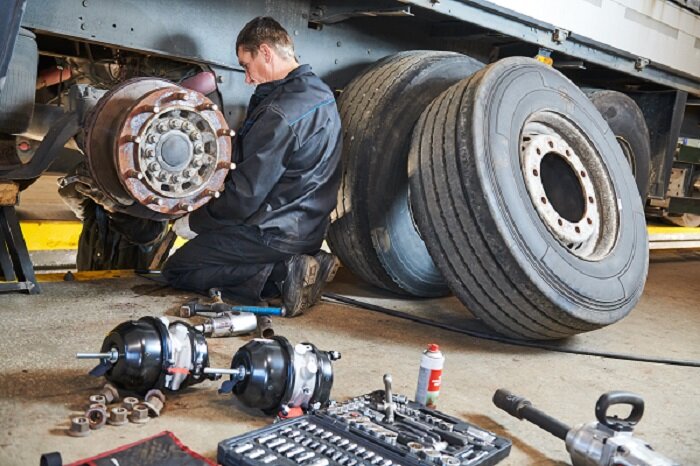
Routine Brake Inspections:
Regular inspections are essential for identifying wear and potential issues with brake pads, rotors, drums, and linings. Check for any signs of excessive wear, cracking, or damage. Brake pads and shoes should be replaced before they reach the minimum thickness recommended by the manufacturer to avoid damage to rotors and drums.
Brake Fluid Checks:
Brake fluid is a critical component of the hydraulic braking system. It should be kept at the recommended level and changed according to the manufacturer’s guidelines. Over time, brake fluid can absorb moisture, leading to reduced effectiveness and corrosion of brake system components. Ensure the fluid is free of contamination and at the correct level during routine checks.
Listening for Brake Noises:
Any unusual sounds when braking, such as squealing, grinding, or clicking, can indicate issues that need immediate attention. These noises often signal that brake components are worn and require replacement.
Brake Cleaning:
Regular cleaning of the brake system helps remove road grime and brake dust, which can accumulate and affect braking efficiency. Special attention should be given to cleaning the brake components during routine maintenance to ensure optimal performance.
Professional Inspections:
While regular driver inspections are crucial, having the brake system checked by a professional mechanic at scheduled intervals can help identify issues that may not be apparent during routine checks. A professional can provide a comprehensive assessment of the brake system’s condition, including the hydraulic system, lines, and connections, to ensure everything is functioning correctly.
Adhering to these brake maintenance practices helps ensure that your flatbed truck can respond effectively in critical situations, enhancing safety and preventing potential accidents. Regular attention to the brake system not only contributes to safer driving experiences but also extends the life of the braking components.
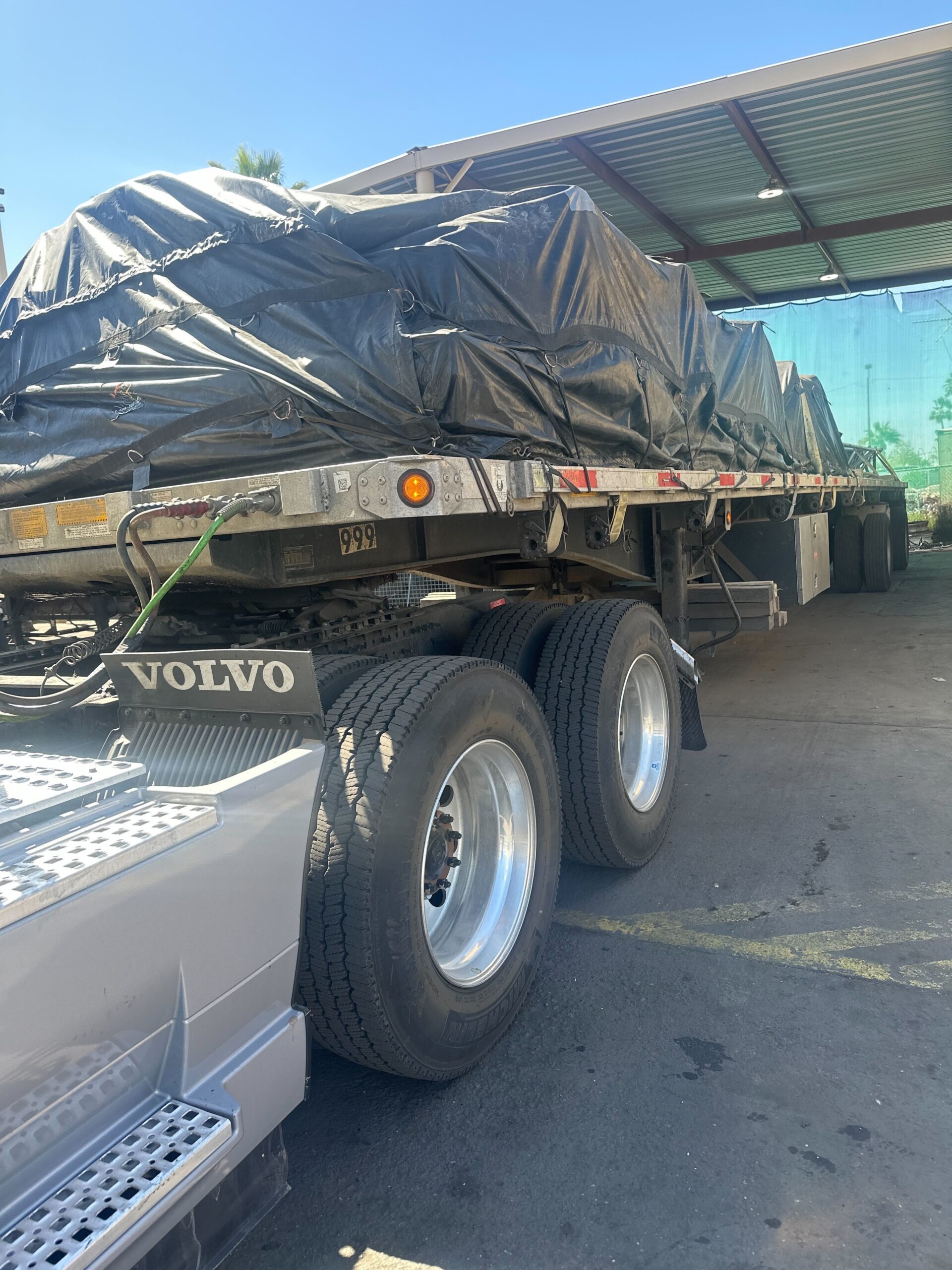
Load Securing and Tarp Maintenance
Effective Load Securing:
The cornerstone of safe flatbed trucking is the securement of cargo. Utilize appropriate securing devices like straps, chains, and binders, and ensure they are in good condition without frays or rust. The method of securing should match the type of cargo, considering its weight, shape, and size. Regularly inspect securing devices for wear and replace them as needed. Always adhere to the specific securement requirements outlined by the Federal Motor Carrier Safety Administration (FMCSA) to ensure compliance and safety.
Tarp Maintenance:
Tarps protect your cargo from weather elements and road debris, making their maintenance crucial. Inspect tarps for tears, holes, or wear before each use. Small damages can quickly become significant under the stress of high speeds and harsh weather, so timely repairs are essential. When applying tarps, ensure they are snug and secure to prevent them from catching wind and tearing. Properly folding and storing tarps when not in use will prevent damage and prolong their life.
Regular Inspection and Adjustment:
Throughout the journey, it’s vital to regularly check that the load remains securely fastened and that tarps have not shifted or loosened. Adjustments may be necessary after initial loading and at stops along the route to accommodate for changes in load positioning and tension in securing devices.
Training and Awareness:
Staying informed about the latest best practices in load securing and tarp maintenance is crucial. Regular training sessions can help drivers stay updated on new regulations and techniques, ensuring that cargo is always secured safely and efficiently.
Implementing these practices in load securing and tarp maintenance not only ensures the safety of your cargo during transit but also minimizes the risk of accidents caused by unsecured loads. By dedicating attention to these areas, flatbed truckers can uphold high standards of safety and compliance on the road.

Electrical Systems and Lighting
Maintaining the electrical systems and lighting of your flatbed truck is crucial for ensuring the vehicle’s operational efficiency and compliance with safety regulations. Electrical systems power essential functions, from starting the engine to charging the battery and operating the lighting. Proper lighting is vital for visibility and communication with other road users. Here’s how to keep these systems in top condition:
Regular Electrical Inspections:
Conduct routine checks of your truck’s electrical system, including the battery, alternator, and starter. Look for signs of wear, corrosion on connections, and damaged wires. A multimeter can be used to check the battery voltage and ensure the alternator is charging correctly. These components are fundamental to your truck’s ability to start and operate reliably.
Battery Maintenance:
The battery should be clean, securely mounted, and free of corrosion. Check the water level in lead-acid batteries and refill with distilled water as needed. Ensure the terminals are clean and tight to prevent power loss. Regular testing of the battery’s charge and starting system can preempt failures.
Lighting System Checks:
Ensure all lights, including headlights, brake lights, turn signals, and marker lights, are fully functional. Regularly clean the lights to improve visibility and replace any burnt-out bulbs immediately. Functional lighting is not only a legal requirement but also essential for safety during nighttime driving or in poor visibility conditions.
Fault Diagnosis and Repair:
Electrical issues can sometimes be complex. Symptoms like dimming lights, slow engine cranking, or erratic instrument panel displays indicate a problem within the electrical system. Diagnosing and repairing electrical faults may require professional assistance, especially if they involve the vehicle’s wiring harness or electronic control units.
Preventive Measures:
Installing surge protectors can prevent damage to your truck’s electrical system from voltage spikes. Regularly using a battery maintainer can also extend the life of your battery, especially if your truck experiences long periods of inactivity.
By paying close attention to the electrical systems and lighting, you ensure that your flatbed truck remains reliable, safe, and compliant with road safety standards. Regular maintenance helps avoid unexpected breakdowns and ensures that your vehicle is always ready for the road.
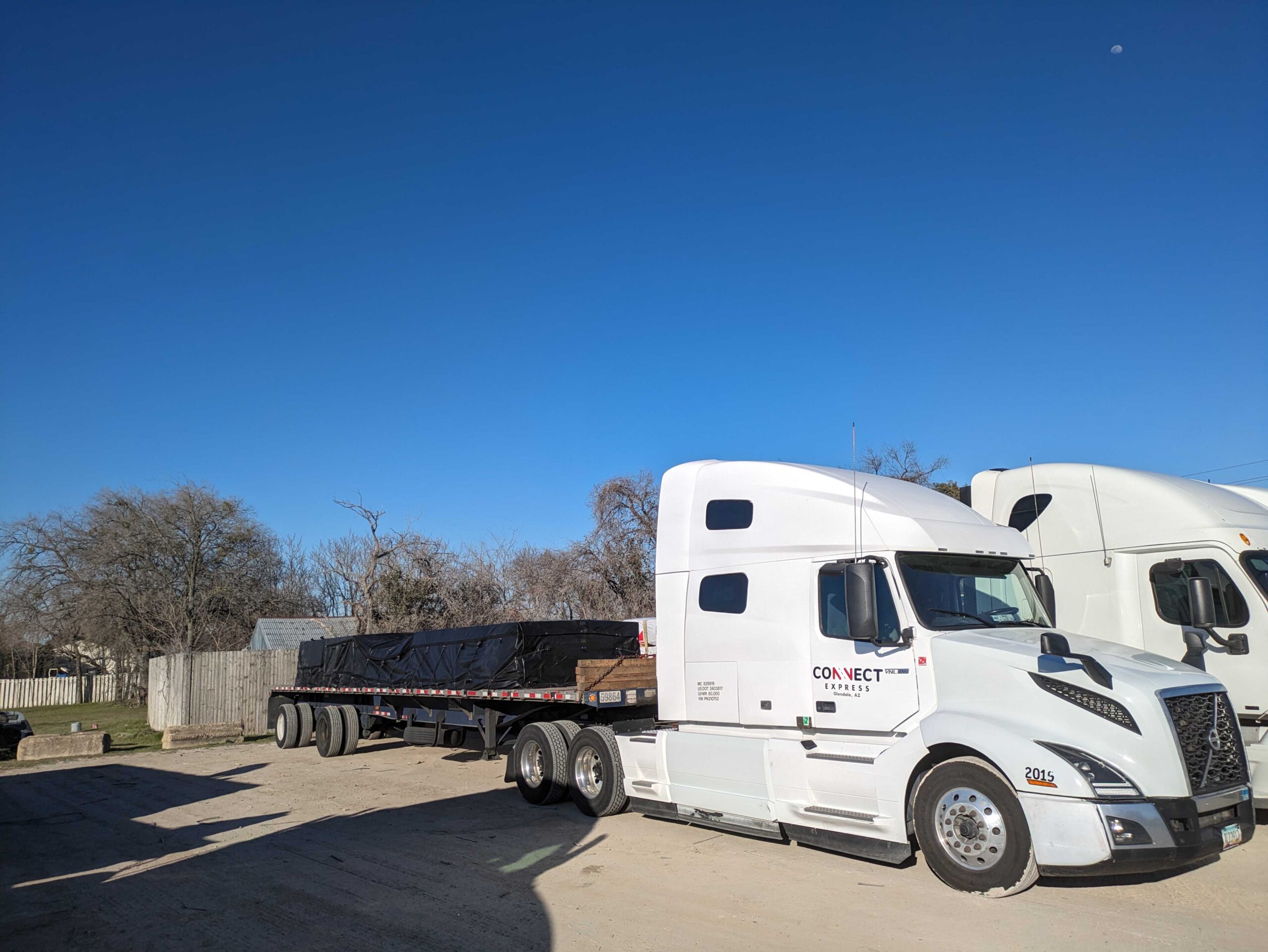
Preventive Maintenance Software and Tools
In the fast-paced world of flatbed trucking, staying ahead of maintenance needs is key to ensuring reliability, safety, and efficiency. Preventive maintenance software and tools are revolutionizing how truckers and fleet managers approach vehicle upkeep. These technological solutions offer a streamlined, efficient way to schedule, track, and manage maintenance tasks, helping to prevent unexpected breakdowns and extend the lifespan of the truck. Here’s how these tools can make a difference:
Automated Scheduling:
Preventive maintenance software allows for the automation of maintenance schedules, ensuring that no critical check-up or service is missed. By inputting the specifics of your flatbed truck, including model, mileage, and usage patterns, the software can generate a personalized maintenance plan that alerts you when service is due.
Maintenance Tracking:
These tools provide a centralized platform to track all maintenance activities, from routine inspections to major repairs. This historical data becomes invaluable over time, offering insights into the vehicle’s health, predicting potential issues, and helping to make informed decisions about maintenance needs.
Inventory Management:
Many preventive maintenance programs include features for managing parts inventory. This ensures that necessary parts are in stock when needed, reducing downtime. It also helps in budgeting and forecasting for parts replacement and maintenance costs.
Mobile Access:
With mobile compatibility, drivers and fleet managers can access maintenance schedules, receive alerts, and update records from anywhere, at any time. This flexibility is crucial for addressing maintenance needs promptly and efficiently, even when on the road.
Enhanced Reliability and Cost Savings:
By preventing maintenance issues before they occur, these software tools not only enhance the reliability of flatbed trucks but also contribute to significant cost savings. Reduced breakdowns mean fewer emergency repairs and less unplanned downtime, directly impacting profitability.
Adopting preventive maintenance software and tools is a smart investment in the longevity and performance of flatbed trucks. It simplifies the maintenance process, ensures compliance with safety standards, and supports a proactive approach to vehicle care, making it an essential component of modern trucking operations.
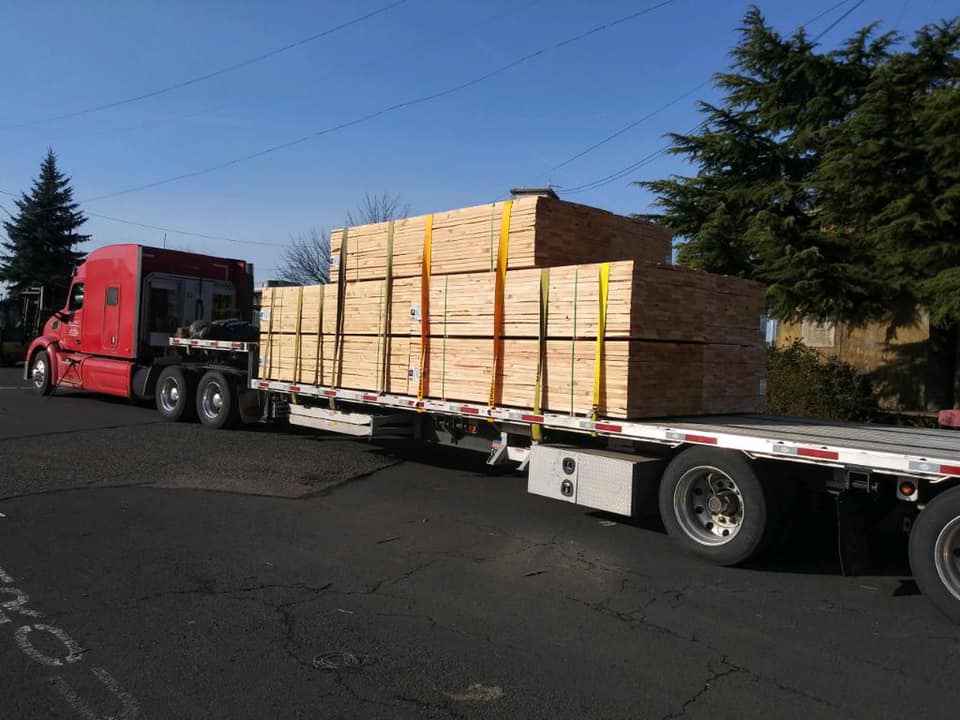
Conclusion
Key Takeaways:
- Proactive Maintenance: Regularly scheduled maintenance, based on both time and mileage, is crucial for identifying and addressing potential issues before they lead to breakdowns or safety hazards.
- Safety First: Proper tire maintenance, brake system care, and load securing are not just about compliance with regulations; they are about ensuring the safety of the driver, the cargo, and other road users.
- Technological Advantages: Leveraging preventive maintenance software and tools can streamline the maintenance process, making it easier to track, schedule, and perform necessary maintenance tasks, ultimately enhancing the truck’s reliability and efficiency.
- Continuous Learning: Staying informed about the latest maintenance techniques, technologies, and regulations is key to maintaining a competitive edge in the flatbed trucking industry.
Maintaining a flatbed truck requires diligence, attention to detail, and a commitment to safety. By following the tips and practices outlined in this guide, flatbed truckers can ensure their vehicles remain in optimal condition, ready to face the challenges of the road. Remember, a well-maintained truck is not just a regulatory requirement; it’s a cornerstone of successful, efficient, and safe trucking operations. Embrace these maintenance practices, invest in preventive care, and your flatbed truck will serve you reliably on the many journeys ahead.


